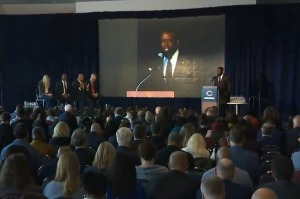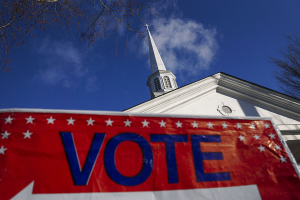Demand for Catholic Education Persists Despite Declining Enrollment
According to statistics released by the National Catholic Educational Association (NCEA) last month, the demand for Catholic education persists despite declining enrollment rates.
According to statistics released by the National Catholic Educational Association (NCEA) last month, the demand for Catholic education persists despite declining enrollment rates.
From the 2003-04 school year to 2004-05, there was a decrease in national enrollment in Roman Catholic schools by a total of 2.6 percent. Some 136 schools were lost either through closures or consolidations.
According to Michael J. Guerra, the president of NCEA, these figures are partly attributable to the increasing tuition cost.
"Sustaining (the schools) has been a struggle, but in the last four or five years it has become a very difficult struggle,” Guerra said to Associated Press (AP). “We don't want to lose these folks. We don't want to serve only those who can afford the bill."
The average cost of tuition for ninth grade at Catholic schools was $5,870 in 2003-04 -- a 37 percent increase from five years earlier according to NCEA figures. In 2003, 27 percent of Catholic high school students got financial aid -- up from 22 percent in 1998.
Government assistance, in the form of school vouchers or tax credits, is needed along with corporate and individual aid to help give more students access to a Catholic education, according to Guerra.
Archbishop John Foley, a top American official in the Vatican, said that not enough Catholics who can afford to donate money to the schools are doing so.
"I have personally observed that as Catholics have become relatively more prosperous, they have become proportionately less generous," Foley said. "We must, must, must find ways to finance an affordable, quality Catholic education for every child."
Meanwhile, Dennis McGrath, the Director of Communications at the United States Conference of Catholic Bishops (USCCB), noted other factors expected to have played role in the declining enrollment.
“It’s due to the changing demographics. Inner-cities are crumbling, new minorities have moved in…. not very many are Catholic,” McGrath said.
“It’s socio-economical issue,” he said. “People are moving in who are neither Catholic nor of other religious background or they're just poor people, difficult to survive day to day.”
“It’s definitely a socio-economical issue,” stressed McGrath.
Nevertheless, despite the declining enrollment, the statistics have shown that approximately one-third of the nation’s 7,799 Catholic schools have reported to have waiting lists for attendance.
Guerra said that this growing demand is due to Catholics’ support of their educational institutions.
“I credit this growth to the leadership and support of Catholic educational leaders, business and civic leaders, working in collaboration with dioceses, who are committed to both opening new schools – and keeping the doors of hope open in urban America.”
According to Guerra, over 350 Catholic schools have opened during the past decade, including the 37 new schools in the past year -- many of which are launched by parents and boards who are seeking the “faith-based, strong academic traditions” provided by Catholic education.
Guerra said that the closings represent a great loss for the country at a time when character and values-added education has become a priority for more parents.
“Even before our nation was founded, Catholic schools were a force in our land--providing a strong academic and Christian education for students. Losing more than 100 of these schools this past year is a tragedy--not only for our church but for our country.”
“We are thwarted more than anything by bricks and mortar,” said Mr. Guerra. “We have buildings, many of them historic, in metropolitan areas where the student population has declined. On the other hand, there are waiting lists for schools in many places because new school building has not kept pace with the population growth.”
He added that while Catholic educators have many programs in place to help lower-income families with tuition assistance, this support is not as widely available to middle-income families who are being squeezed by escalating costs.
“In many cases, displaced students can find a home in nearby Catholic schools. This holds true for many of the consolidated school situations,” the NCEA president added. “However, the traditions, promise and potential lost with each closed school is tragic,” said the Catholic leader, “especially for the schools that are shutting down in the inner cities.”
Mr. Guerra said the statistical report showed that more than 44.6 percent of Catholic schools are in urban and inner-city areas. “Our goal is to serve all children whose parents want a Catholic education for them. We believe that the children of the poor--many of them found in our inner cities--are our children too,” he noted.
“Some parents select schools with their checkbooks by paying tuition; others, by choosing residences located in good school districts,” said Mr. Guerra.
“But millions of parents do not have these resources. These families deserve an opportunity to choose schools," said the NCEA president.
“Catholic educators will continue to speak out, not simply for our own institutional interests and for the students in our schools, but also for all the students and families who have no voice and no choice in deciding their educational future."
NCEA is the largest private, professional education Association in the world. Founded in 1904, the Association membership represents more than 200,000 educators serving 7.6 million students in Catholic education at all levels




























